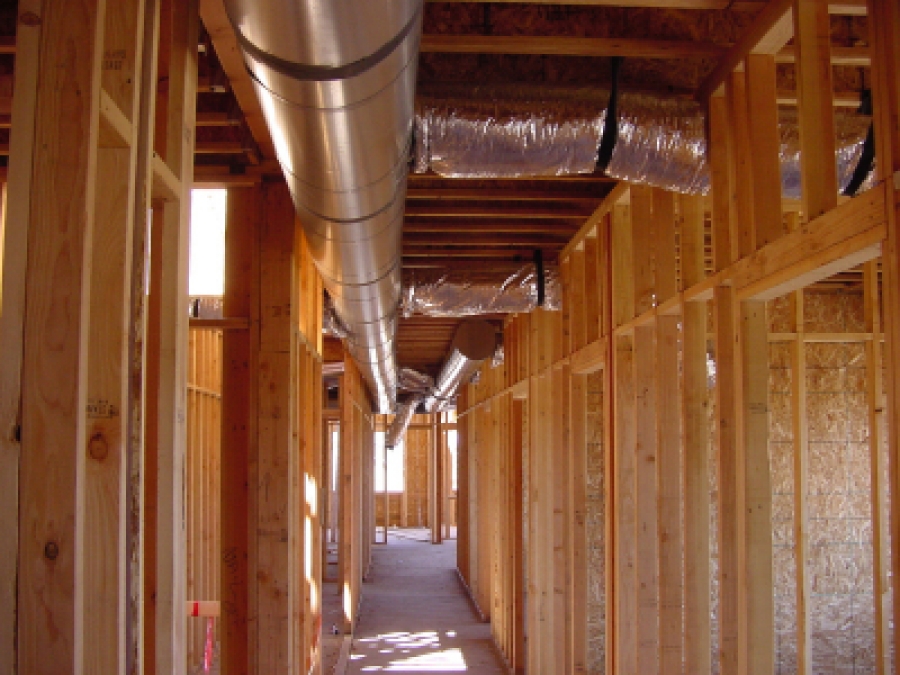Fibrous-Glass Ducts
Fibrous-glass ducts are constructed from fiberglass board and are available in several variations. Variations include, but are not limited to: standard duct board, medium high velocity duct board, and environmentally pure duct board.

Topic Summary
- Standard duct board is made from strong, resilient glass fibers bonded with a thermosetting resin. Male/female joints are typically factory made and set into the transverse edges of each board; however, field revisions may be easily made. A tough FSK (foil-scrim-kraft) facing is laminated to the exterior surface of the board which serves as a moisture barrier and as protection.
- Medium high velocity duct board is made from strong, resilient glass fibers bonded with a thermosetting resin. Male/female joints are typically factory made and set into the transverse edges of each board; however, field revisions may be easily made. The airstream side of the duct board features a fiberglass mat for use at velocities up to 5,000 fpm. A tough FSK (foil-scrim-kraft) facing is laminated to the exterior surface of the board which serves as a moisture barrier and as protection.
- Environmentally pure duct board is free from formaldehyde and is made from strong, resilient glass fibers bonded with a thermosetting resin. Male/female joints are typically factory made and set into the transverse edges of each board; however, field revisions may be easily made. For use at velocities up to 6,000 fpm, the airstream side of the duct board features a fiberglass mat with a high tensile strength and a coating which restricts microbial growth. The opposite side features a fire-resistant FSK facing extending the full width of the male edge to serve as an integral closure flap for section joints.
Duct board serves as an inexpensive way to combine the installation of ductwork and insulation. Duct board can also combine thermal insulation with sound transmission insulation.
All ductwork should be cleaned regularly. Check local, state, and national codes for recommended intervals. Clean the duct system using methods and equipment as described in North American Insulation Manufacturers Association (NAIMA) Publication AH122, Cleaning Fibrous Glass Insulated Duct Systems, Recommended Practice. If you notice that the air side surface of the duct has become damaged, it should be replaced. Also, holes in the foil outside of the duct should be repaired.
Manufacturers include, but are not limited to: Johns Manville, Owens-Corning, Knauf, and Certain-Teed. Each specific system and application has its own instructions for installation. Check manufacturer's printed instructions and specifications prior to starting any work, whether it be maintenance or new installation. Also, check the building codes for the specific type of air distribution system in which the ducts are to be installed. It should be noted that residential codes are not identical to commercial or industrial codes so prior to starting any work, check local, state, and national codes, the EPA, and any other body having jurisdiction.

Buildipedia Staff
The Buildipedia research and writing staff consists of dozens of experienced professionals from many sectors of the industry, including architects, designers, contractors, and engineers.
Website: buildipedia.com/


